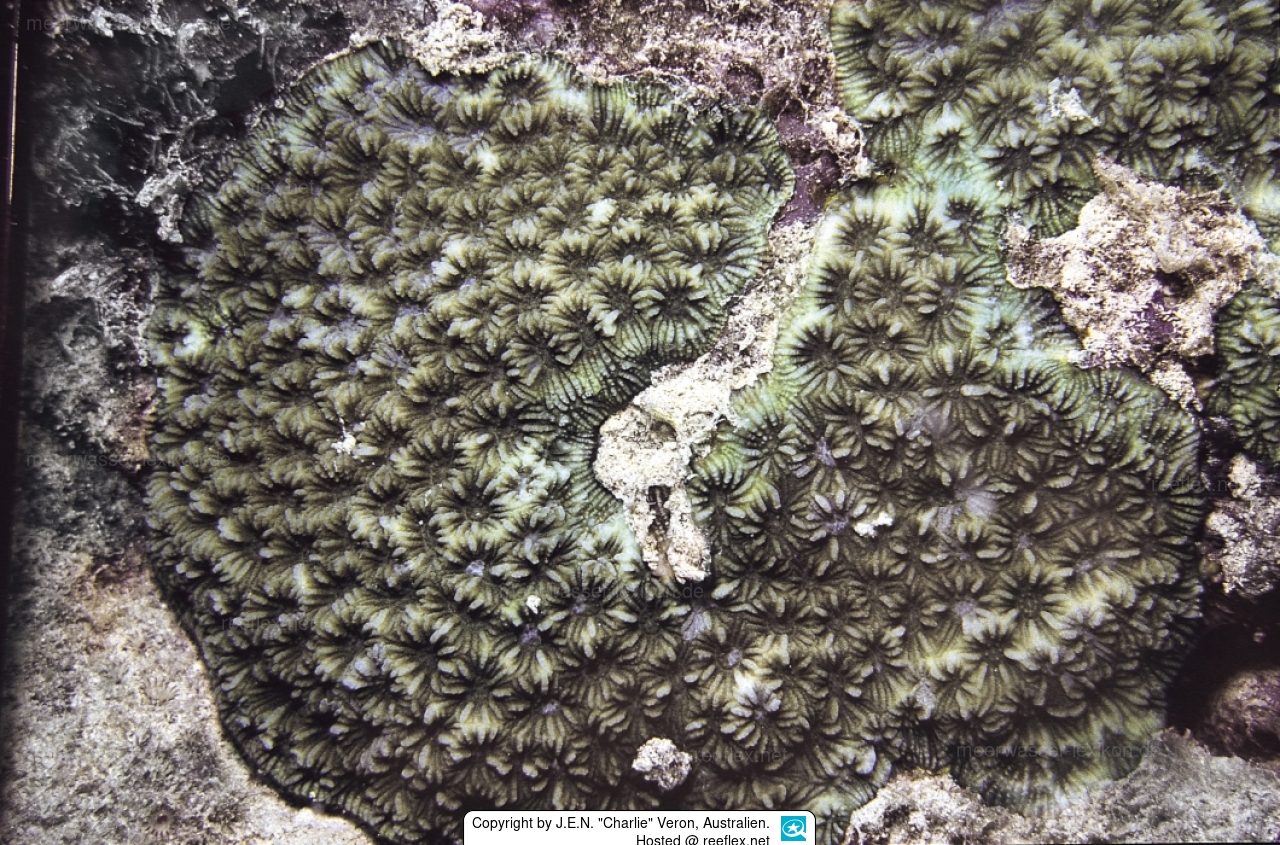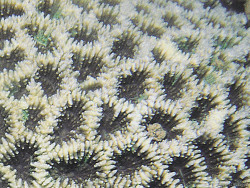Info
Favites spinosa
(Klunzinger, 1879)
Characters: Colonies are small, massive and rounded. Corallites are deeply excavated, with angular walls. Septa are straight, widely spaced and are usually in two alternating orders. Paliform lobes are weakly developed. Septa have very prominent teeth, which have ragged margins. Columellae are small and compact.
Colour: Walls are off-white, centres are dark.
Habitat: A wide range of reef environments.
Abundance: Uncommon.
Similar species: Favites flexuosa
Source reference: Veron (2000). Taxonomic reference: Klunzingers original description/specimens.s original description/specimens.
Synonyms:
Prionastraea spinosa Klunzinger, 1879 · unaccepted > superseded combination (basionym)
Prionastrea spinosa (Klunzinger, 1879) · unaccepted > superseded combination







 Dr. John Edward Norwood "Charlie" Veron, Australien
Dr. John Edward Norwood "Charlie" Veron, Australien





















